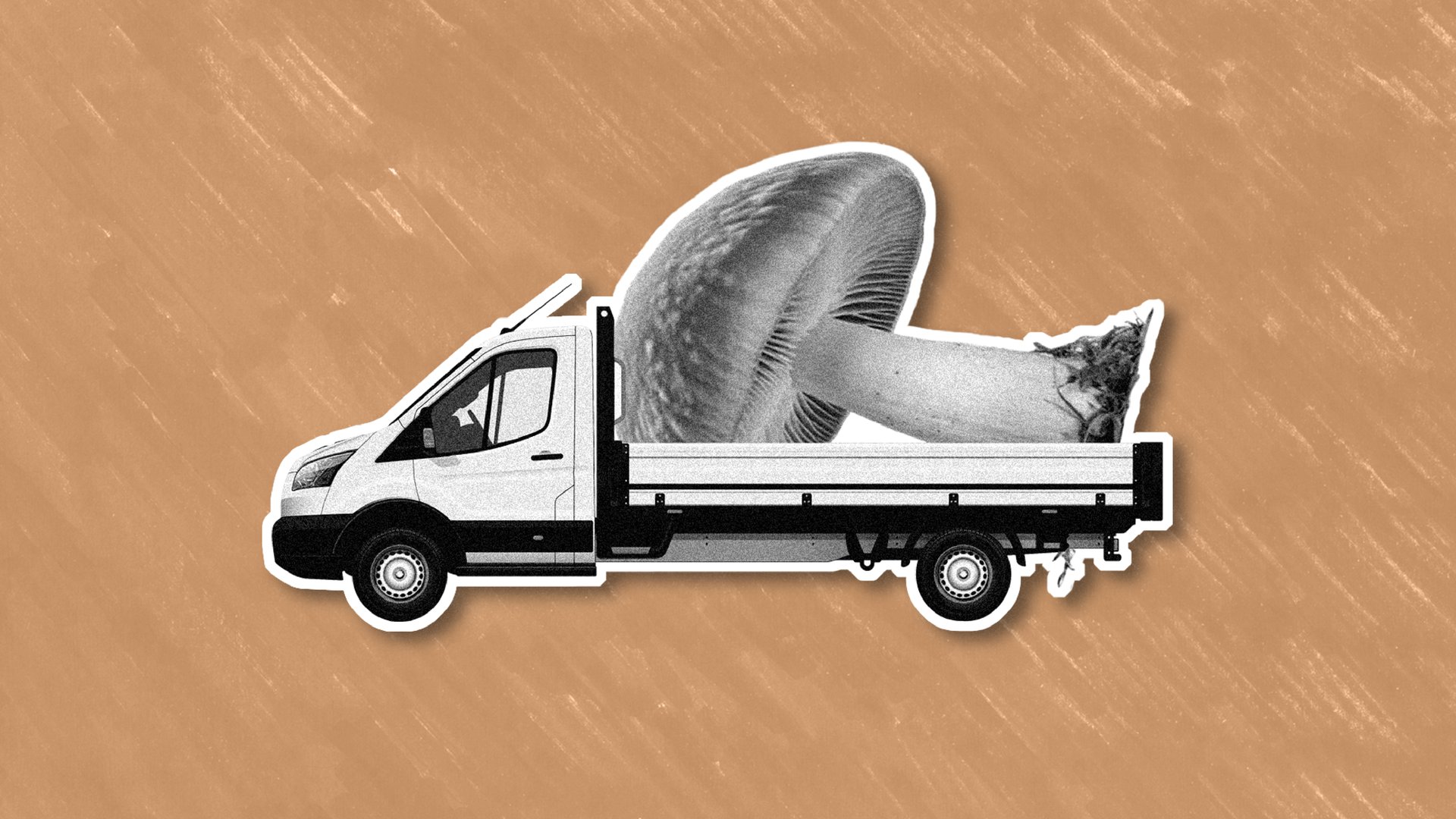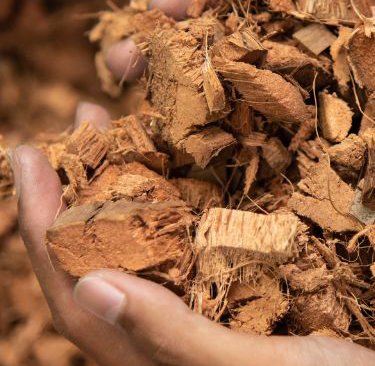Plant-based packaging is the next big thing?
Mushroom Styrofoam anyone?
Posted 23.05.04
The pressure is on for big brands, supermarkets, and organisations to up their environmental game. That means getting creative and innovative, especially when it comes to packaging.
Enter the rising star: plant-based packaging. It's a game-changer with its eco-friendly qualities, like reducing reliance on fossil fuels and boasting sturdy, durable properties that rival plastic hold. The options are expanding, offering viable alternatives that help businesses meet their sustainability goals.
With exciting innovations using materials like mushrooms and even seaweed, we’re proud to present our top plant-based packaging options that we’re getting excited about right now.
Enter the rising star: plant-based packaging. It's a game-changer with its eco-friendly qualities, like reducing reliance on fossil fuels and boasting sturdy, durable properties that rival plastic hold. The options are expanding, offering viable alternatives that help businesses meet their sustainability goals.
With exciting innovations using materials like mushrooms and even seaweed, we’re proud to present our top plant-based packaging options that we’re getting excited about right now.
Our top plant-based packaging options
Mushroom Mycelium
That’s right, mushrooms.
Not only are they incredibly versatile as a plant-based meat substitute, but now they're taking on the packaging industry too. Enter Mushroom Mycelium, a game-changing material created by blending fungus sprouts (mycelia) with agricultural elements like seedlings. This innovative plant-based alternative forms a lightweight, foam-like substance that can replace harmful Styrofoam.
Here's the kicker: it's not just sturdy, it's also compostable and biodegradable. This means it can be used to package virtually any product, ensuring its safety during transportation, while keeping the environment in mind. Say goodbye to waste that lingers for ages! Mushroom-based packaging offers a closed cycle—strong, eco-friendly, and easy to produce. What’s not to love?
Seaweed
Seaweed is really making waves in the plastic alternative space. It grows rapidly and efficiently while reducing land usage, freshwater consumption, and the need for extensive energy and resources compared to other alternatives on this list.
These underwater wonders are harvested, fermented, and transformed into a plastic-like material without any harmful chemical processes involved. But here's the best part—it's completely biodegradable! When you're done with it, simply dispose of it without worrying about leaving any waste behind.
Imagine if big organisations embraced this waste-free, chemical-free material. It's strong, durable, and incredibly versatile, making it the perfect alternative to plastic containers and bottles. The impact could be a total game-changer. Seaweed: the ocean's gift to a greener future.
Piñatex
We might be venturing into textiles territory here, but the innovation behind Piñatex deserves a shoutout. Plus, a sturdy plant-based leather-alternative giftbox or bag is always beneficial to anyone who wants a reusable packaged products.
Developed with the intention of creating a durable, beautiful and eco-friendly alternative to leather, Piñatex is a stroke of genius.
Piñatex is created entirely from the byproducts of the pineapple harvest, and results in a product that’s made without using extra land, water, pesticides or fertilisers. The material itself is created from the long fibres that come from the pineapple leaves, and offers up the feel, strength and durability of leather.
It really is a fantastic combination of design and resourcefulness, taking a wasteful byproduct and turning it into something beautiful.
Seaweed is really making waves in the plastic alternative space. It grows rapidly and efficiently while reducing land usage, freshwater consumption, and the need for extensive energy and resources compared to other alternatives on this list.
These underwater wonders are harvested, fermented, and transformed into a plastic-like material without any harmful chemical processes involved. But here's the best part—it's completely biodegradable! When you're done with it, simply dispose of it without worrying about leaving any waste behind.
Imagine if big organisations embraced this waste-free, chemical-free material. It's strong, durable, and incredibly versatile, making it the perfect alternative to plastic containers and bottles. The impact could be a total game-changer. Seaweed: the ocean's gift to a greener future.
Piñatex
We might be venturing into textiles territory here, but the innovation behind Piñatex deserves a shoutout. Plus, a sturdy plant-based leather-alternative giftbox or bag is always beneficial to anyone who wants a reusable packaged products.
Developed with the intention of creating a durable, beautiful and eco-friendly alternative to leather, Piñatex is a stroke of genius.
Piñatex is created entirely from the byproducts of the pineapple harvest, and results in a product that’s made without using extra land, water, pesticides or fertilisers. The material itself is created from the long fibres that come from the pineapple leaves, and offers up the feel, strength and durability of leather.
It really is a fantastic combination of design and resourcefulness, taking a wasteful byproduct and turning it into something beautiful.
Coconut husk
Let's not underestimate the hairy fibres on the outside of a coconut, my friends. At first glance, they may seem lackluster, but they're actually being wasted in the coconut harvesting industry.
Once these fibres are removed from the shell and pressed, they transform into an astonishingly robust and effective alternative to cardboard. And guess what? It even shares the same delightful colour of tan.
But that's not all. Mix in some finely ground wood and a couple of other natural fibres, and voila! You've got yourself a plastic alternative. It's lightweight, super strong, and more durable than those flimsy plastic fibers. Companies might even save some dough on inventory, thanks to the protective powers of this sturdy plant-based material.
Who knew coconuts had such hidden talents? They're not just for sipping tropical drinks on the beach anymore!
Cellulose
Now, let's zoom in and explore the world of cellulose at a cellular level. Hidden within the plant's cell walls, this little powerhouse is a game-changer in the realm of synthetic packaging alternatives.
Once fully formed, cellulose unleashes its versatility, offering a plethora of properties that make it an absolute packaging champion. It can be molded into air-tight wonders and transformed into water-resistant materials of varying thicknesses.
That's why it's an excellent choice for food packaging and cellophane. It excels at keeping our precious goodies fresh, sealed, and protected from the elements. With cellulose on the job, your cucumbers will be in safe, reliable hands.
Let's not underestimate the hairy fibres on the outside of a coconut, my friends. At first glance, they may seem lackluster, but they're actually being wasted in the coconut harvesting industry.
Once these fibres are removed from the shell and pressed, they transform into an astonishingly robust and effective alternative to cardboard. And guess what? It even shares the same delightful colour of tan.
But that's not all. Mix in some finely ground wood and a couple of other natural fibres, and voila! You've got yourself a plastic alternative. It's lightweight, super strong, and more durable than those flimsy plastic fibers. Companies might even save some dough on inventory, thanks to the protective powers of this sturdy plant-based material.
Who knew coconuts had such hidden talents? They're not just for sipping tropical drinks on the beach anymore!
Cellulose
Now, let's zoom in and explore the world of cellulose at a cellular level. Hidden within the plant's cell walls, this little powerhouse is a game-changer in the realm of synthetic packaging alternatives.
Once fully formed, cellulose unleashes its versatility, offering a plethora of properties that make it an absolute packaging champion. It can be molded into air-tight wonders and transformed into water-resistant materials of varying thicknesses.
That's why it's an excellent choice for food packaging and cellophane. It excels at keeping our precious goodies fresh, sealed, and protected from the elements. With cellulose on the job, your cucumbers will be in safe, reliable hands.
Sugarcane Bagasse
Sugarcane bagasse, the unsung hero of the sugar extraction process, deserves a standing ovation. Leftover after crushing sugarcane stalks, it's composed of cellulose, hemicellulose, and lignin - the stuff that gives plant cell walls their structure. And guess what? Bagasse is not just a filler, it's a packaging superstar!
This fibrous wonder can be transformed into a raw material alternative for paper, cardboard, and even biodegradable plastics. Talk about versatility! With a constantly expanding array of plant-based materials revolutionising the packaging industry, the possibilities are as sweet as sugar.
At Studio Unbound, we're obsessed with finding that perfect balance between stunning packaging design, branding that pops, and an unwavering commitment to the environment. Reach out to us, and let's join forces to make your business a shining example of responsible and irresistibly attractive packaging.
Sugarcane bagasse, the unsung hero of the sugar extraction process, deserves a standing ovation. Leftover after crushing sugarcane stalks, it's composed of cellulose, hemicellulose, and lignin - the stuff that gives plant cell walls their structure. And guess what? Bagasse is not just a filler, it's a packaging superstar!
This fibrous wonder can be transformed into a raw material alternative for paper, cardboard, and even biodegradable plastics. Talk about versatility! With a constantly expanding array of plant-based materials revolutionising the packaging industry, the possibilities are as sweet as sugar.
At Studio Unbound, we're obsessed with finding that perfect balance between stunning packaging design, branding that pops, and an unwavering commitment to the environment. Reach out to us, and let's join forces to make your business a shining example of responsible and irresistibly attractive packaging.


